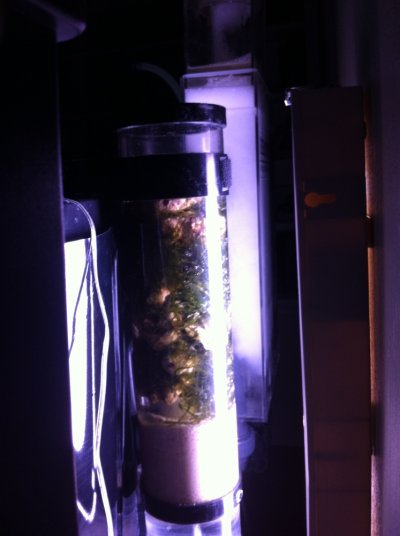ekean45
Aquarium Advice Activist
Finally made good use of a crappy SeaClone protein skimmer! I turned it into a refugium - see picture below. I shortened the center tube to about 3 inches, added live sand, some tonga live rock rubble, and about 1/2 pound of Grape Caulerpa algea. I have a full spectrum T8 for lighting running lengthwise behind it. I have 3 questions as follows.
1 - Lighting: Do you keep the light for the refugium on 24 hours a day or should it be on a similar time as regular lighting for the tank (I keep my lighting on about 8 hours a day) controlled by a timer.
2 - Copepods: I've read several articles on adding copapods by seeding the refugium that can be purchased at a LFS. Has anyone had experience with this and do you think it can be done successfully with this type of setup? What have your experiences been?
3 - Pruning: Is there any particular way pruning the Caulerpa should be performed?

1 - Lighting: Do you keep the light for the refugium on 24 hours a day or should it be on a similar time as regular lighting for the tank (I keep my lighting on about 8 hours a day) controlled by a timer.
2 - Copepods: I've read several articles on adding copapods by seeding the refugium that can be purchased at a LFS. Has anyone had experience with this and do you think it can be done successfully with this type of setup? What have your experiences been?
3 - Pruning: Is there any particular way pruning the Caulerpa should be performed?


